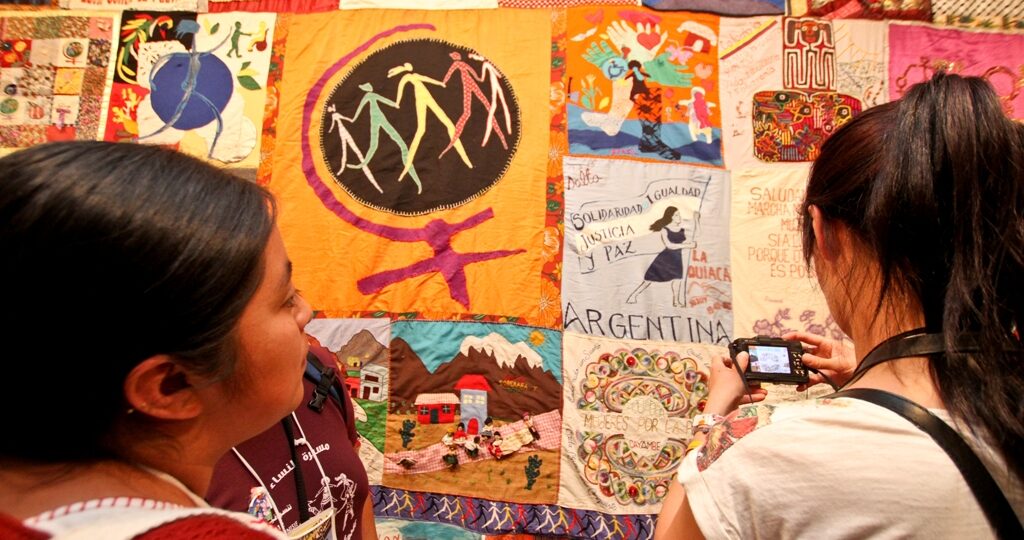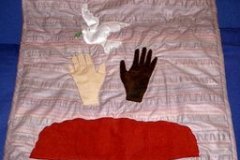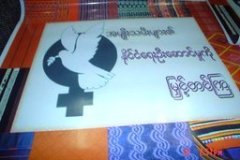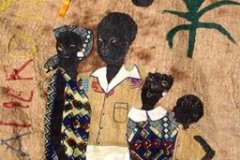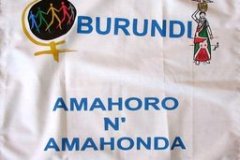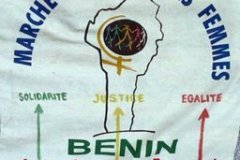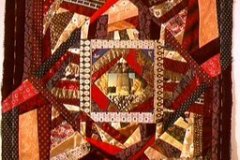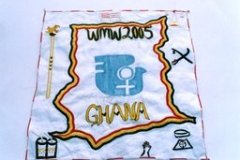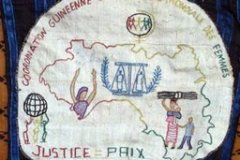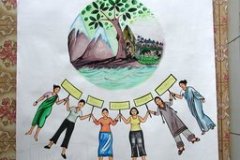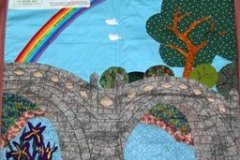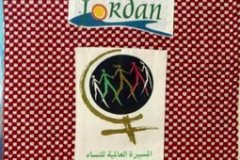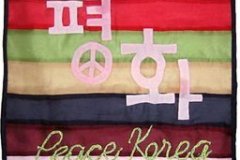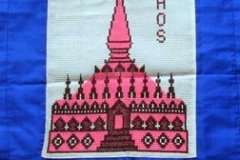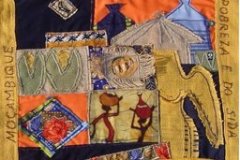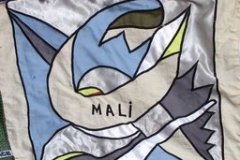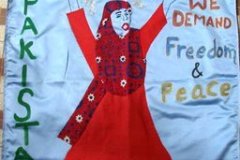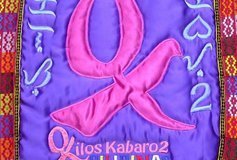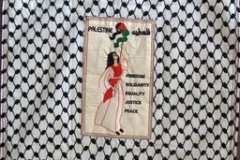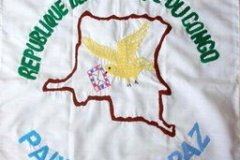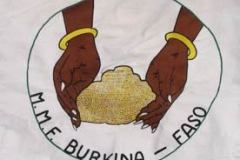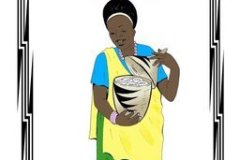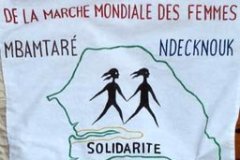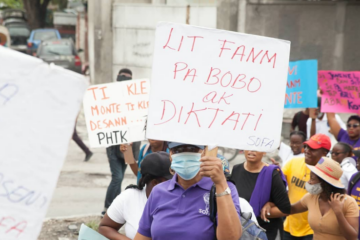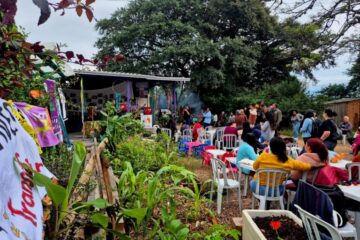Sewing a quilt can be a lonely work performed inside a house or a shop. But not for the World March of Women! In 2005, for the movement’s 2nd International Action, the so-called Solidarity Quilt passed through the hands of women from all continents, as they added pieces of fabric that represented their struggles in 63 countries and territories. Now, 18 years later and as we approach another International Meeting of the World March of Women, we look back on this experience to inspire us to continue to be creative, defiant, weaving our territories and strengthening concrete, tangible bonds between different peoples of the world.
The Solidarity Quilt played a symbolic role: it represented the union of women around a feminist political project, expressed that same year in the World Letter from Women to Humanity, which traveled with the Quilt and was launched on March 8 that year, in São Paulo, Brazil. Peace, freedom, justice, solidarity, and equality were the five pillar values of the Letter.

The Quilt was the driver of internationalist solidarity practices. To bring those 63 patches together, it was necessary to cross borders, meet and face militarism firsthand, strengthen bonds between militants from the same region, share a task with international trust. These lessons were part of the complex task of the Quilt’s journey across countries and regions—and there was also a lesson in terms of consensus, of the collective formulation of words and/or images that would feature the patch of each national coordinating board of the World March of Women.
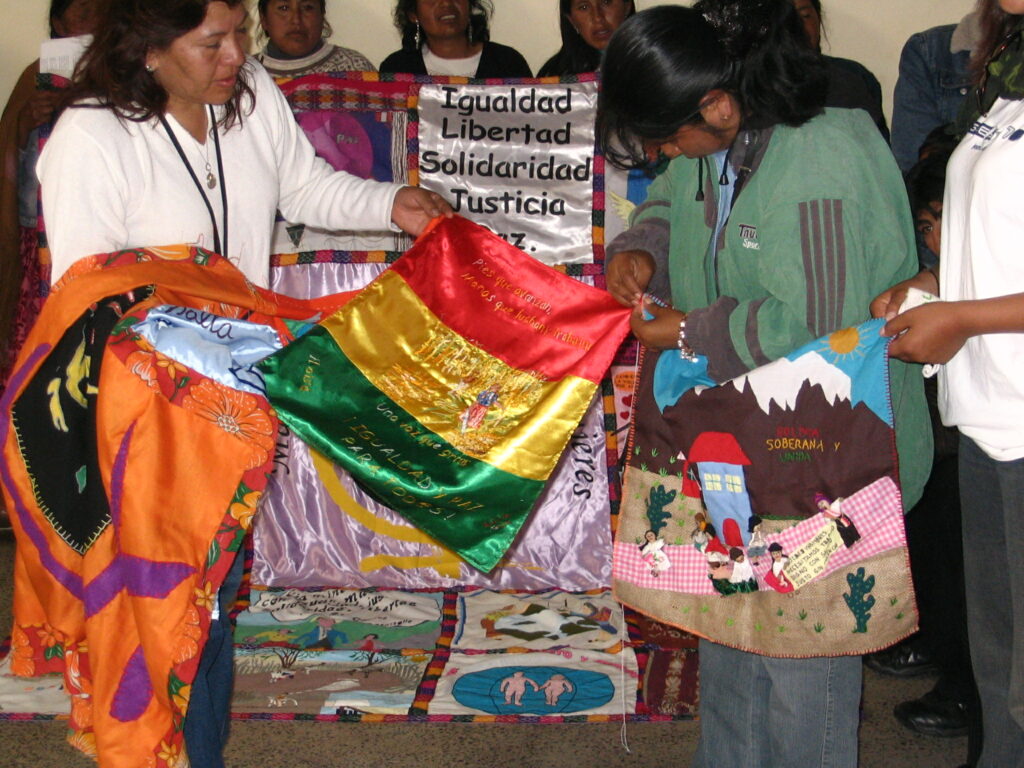
The final destination of the Quilt—and the Letter—was Ouagadougou, Burkina Faso, on October 17th, International Day for the Eradication of Poverty. In what is regarded as one of the world’s poorest countries, international, regional, and local WMW delegates came together to close the 2nd International Action and reflect about what poverty and wealth mean, both for international indicators and for women’s lives. Meanwhile, around the world, there was the first “24 hours of feminist solidarity” experience. From New Caledonia and according to different time zones around the world, women held demonstrations in their locations, from noon to 1 p.m. There were simultaneous actions in 35 countries, stating that a world free of poverty and violence is possible and starting a new form of internationalist feminist action by the World March of Women.
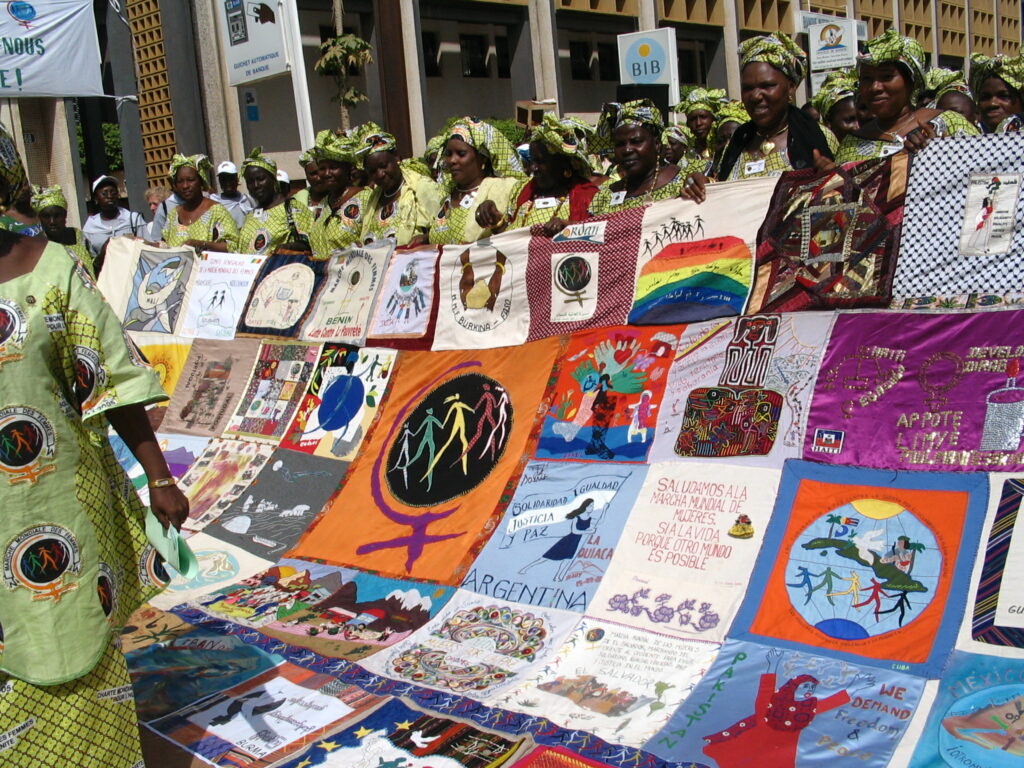
In Women’s Words
The World Letter From Women to Humanity—which traveled the world with the Quilt—had been proposed at the 4th International Meeting of the WMW, which took place in March 2003 in New Delhi, India. The letter was an initiative to show that “we, women, take the initiative to propose the outlines of a letter for another possible world, with universal and feminist values,” as the report of the time reads.
The same report includes the inspiration and expected content: “This document could be grounded in the 17 global demands of the March to formulate proposed alternatives. It could be inspired by the 1948 Universal Declaration of Human Rights, but taking a step further toward the progress of humanity.” And so a working group was established to draft this letter, tasked with summarizing the contributions of all national coordinating boards of the World March of Women. The text was approved at the 5th International Meeting, which took place in Kigali, Rwanda, in December 2004. And its content was the basis for the formulation of the Quilt patches in each of the places where women came together to weave this story together.
We reject this world! We propose to build another world where exploitation, oppression, intolerance, and exclusion no longer exist, and where integrity, diversity, and the rights and freedoms of all are respected.
World Letter from Women to Humanity, 2005
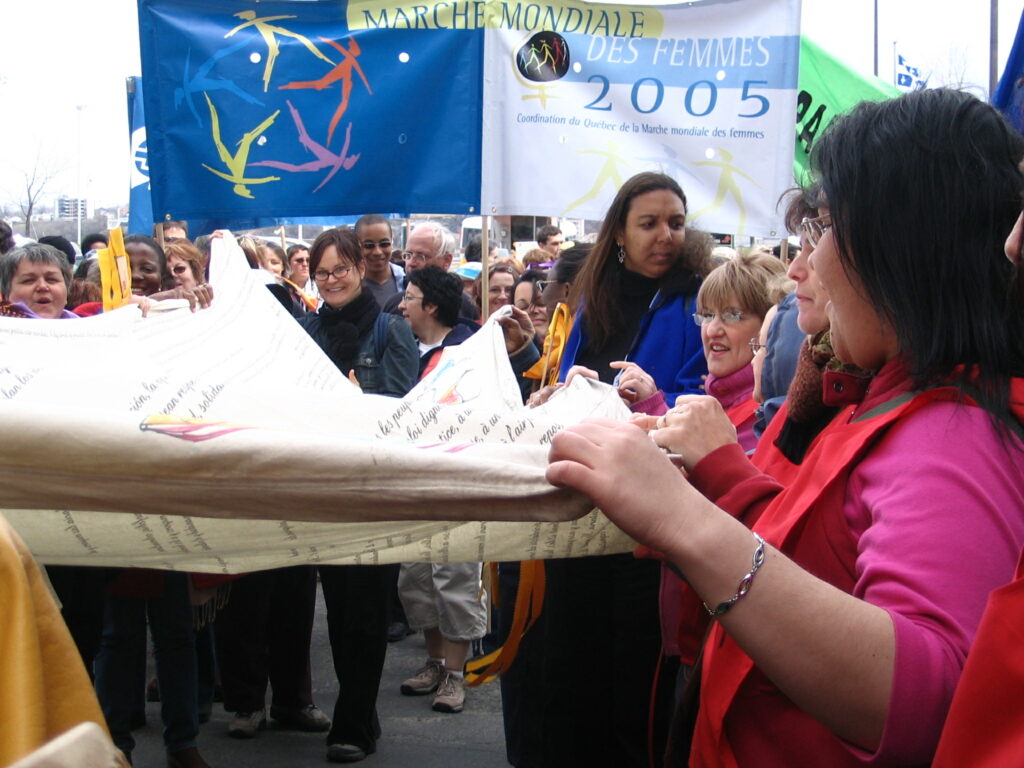
Feminist Journeys
Women have sewed the quilt in movement—which was a challenge. Moving the Quilt was a collective, often very complex task. On the American continent, for example, a lot of attention and planning was necessary to move the Quilt from Latin American countries through Mexico to the United States. The Mexican-US border is deeply militarized, which is part of an anti-immigration policy and ideology that is expressed across the US territory, and not only on borders.
To this day, in the Americas, especially Central America, militants from territory-based, grassroots feminist movements have been watching and concerned about precarious, unsafe migrations to the global North. Caravans leaving from deeply unequal countries like Honduras show the pressing need to rebuild countries and free them from imperialism, dependence, corporate power, and predatory extractivism.
Currently in Europe, the feminist movement has also been focusing on the struggle against borders and economic-military agreements that close off the continent and discriminate against migrants. For migrant women, xenophobia means precariousness, lack of documents, and often having underpaid domestic and care work with no rights as their only option. Practicing internationalist solidarity then includes supporting organized migrant women and denouncing regional and racial inequalities that promote a self-proclaimed, selective social welfare at the expense of the exploitation of and violence against many.
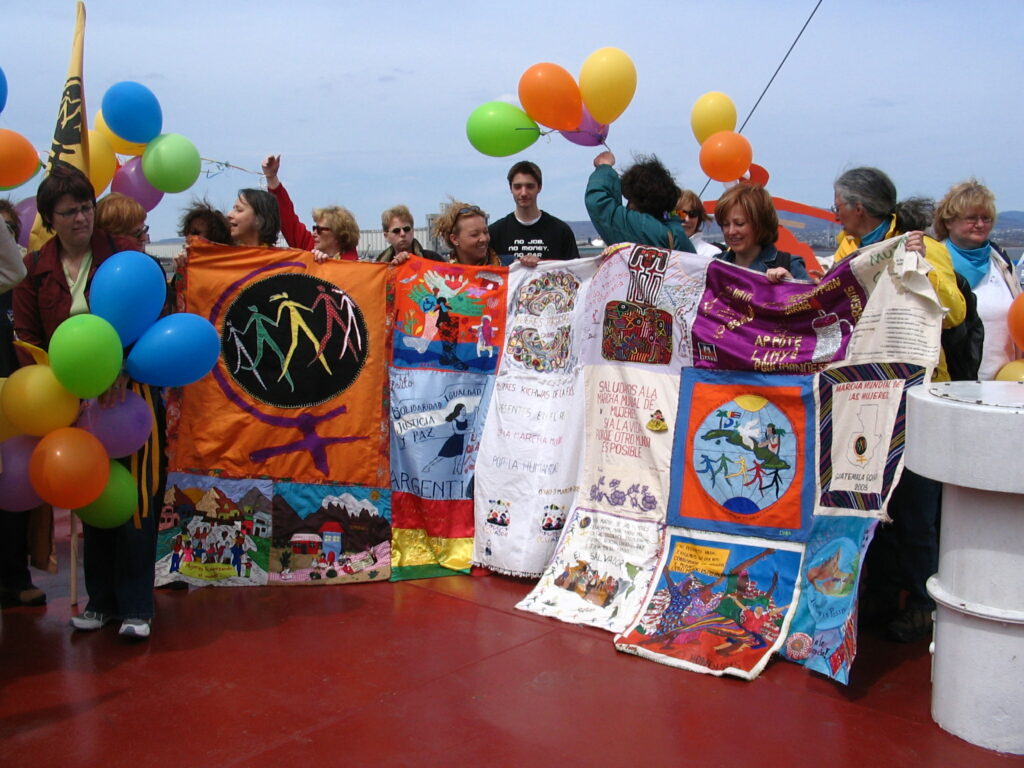
In Asia, tensions were high on the India-Pakistan border. It is a strongly marked out, limited, and militarized border, and an element of territorial battles. This is why the militants involved in the 2005 action had to formulate an entire strategy to move the Quilt, which also symbolized the possibility of rebelling against national divisions, celebrating popular sovereignty, and exercising friendship between women from different peoples.
The final stitch on the Quilt was sewed by the valuable militant Awa Ouedraogo, from Burkina Faso, who was then part of the WMW International Committee. Awa passed away in July 2021, and remembering the Quilt is also remembering her energy and commitment with feminism. Awa traveled from South Africa to Burkina Faso taking care of the Quilt on the final stretch of its journey, adding the last patches from the African continent, and finally sewing its hem. The result is a historical piece, a fundamental object of the story of grassroots feminism in the world.
More than the sum of struggles, the Solidarity Quilt, as well as the World Letter From Women to Humanity, represents the formulation and synthesis of a collective, diverse political actor in movement.
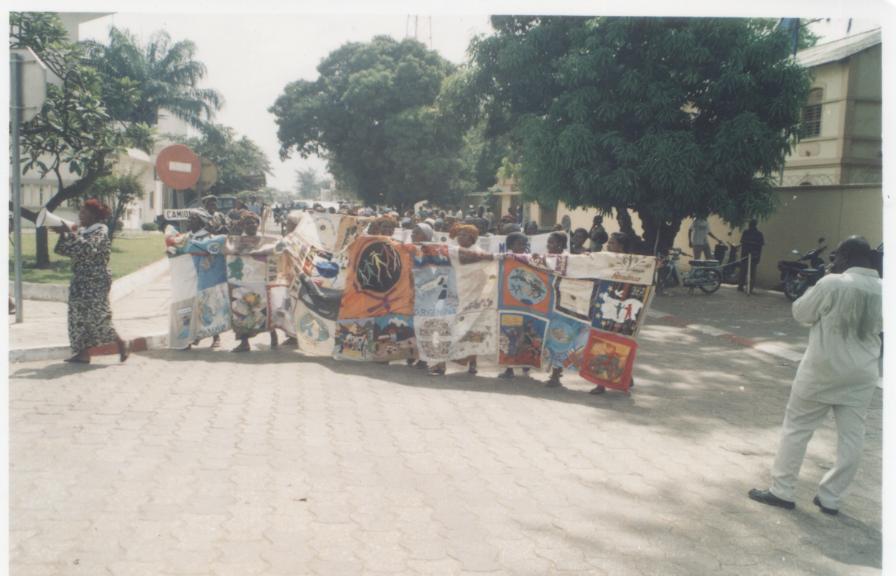
See below photographs of some of the Quilt’s patches:

